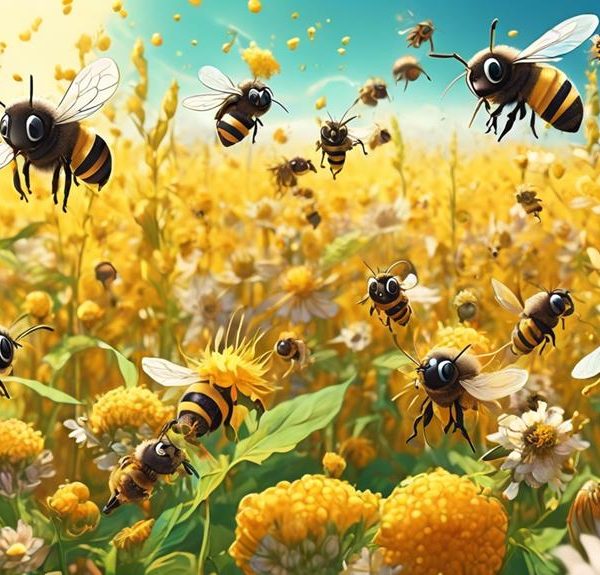Scrutinize the surprising symbiosis between mason bees and blueberries, as we delve into the mysteries of pollination and its impacts on your favorite fruit.
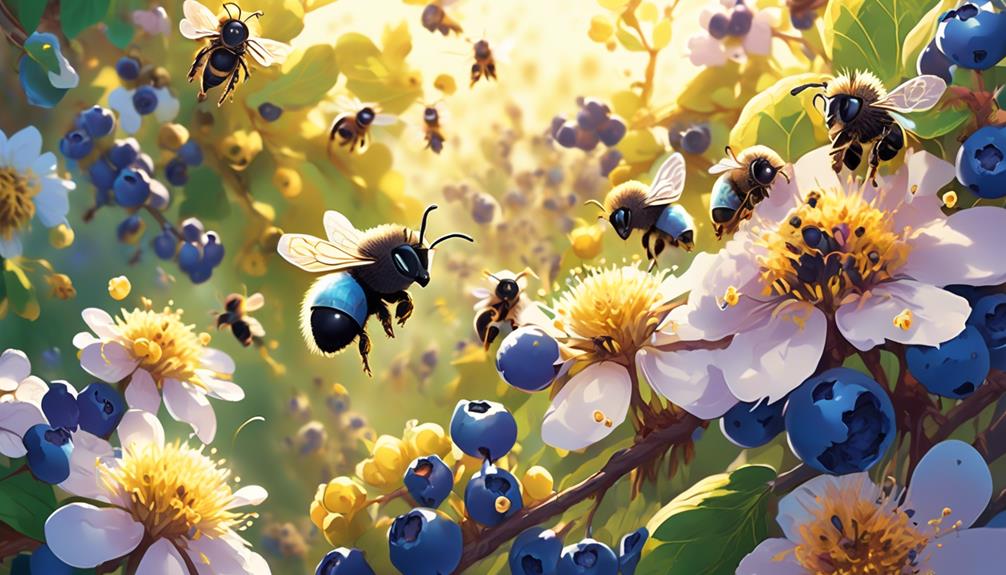
Do Mason Bees Pollinate Blueberries?
Like a detective piecing together clues,
you're likely searching for answers about the mysterious relationship between mason bees and blueberries.
You've probably heard about the vital role bees play in the pollination process,
but do mason bees specifically aid in the pollination of blueberries?
While it's easy to jump to conclusions,
it's essential to scrutinize the facts and examine the science behind this intriguing question.
As we navigate this discussion,
you'll discover the true nature of this relationship and its potential implications for blueberry harvests.
Just remember, the answer might surprise you.
Key Takeaways
- Mason bees are solitary insects that make their nests in hollow reeds or holes in wood.
- They have specialized hairs on their abdomen to carry pollen and visit flowers in search of nectar and pollen.
- Mason bees are hyper-efficient pollinators, especially for bell-shaped corolla flowers like blueberries.
- The cross-pollination by Mason bees increases the yield, quality, and early start of blueberry crops.
Understanding Mason Bees
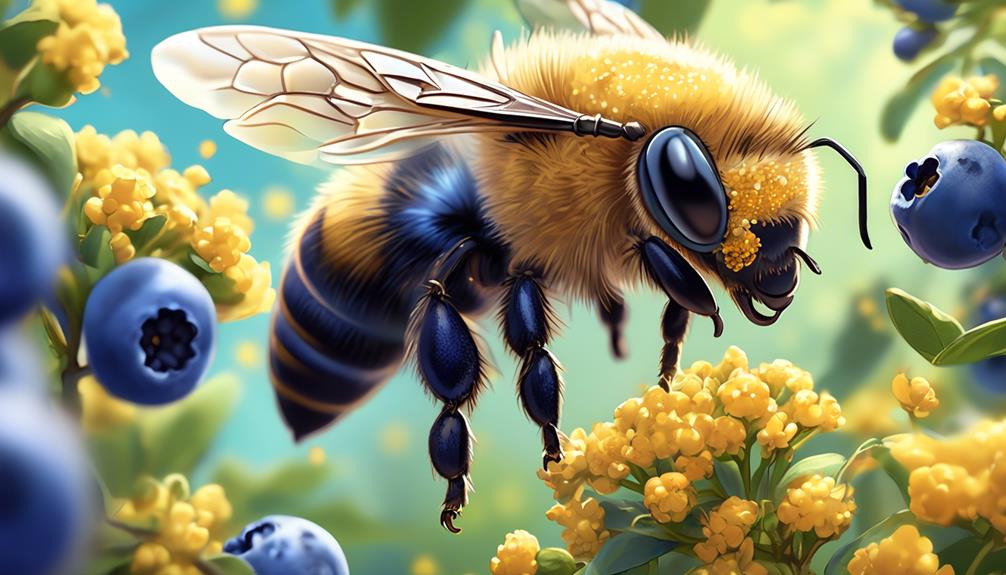
To fully appreciate the crucial role of Mason bees in pollinating blueberries, it's imperative that you first understand their unique biology and behavior. Unlike honeybees, Mason bees are solitary insects. Each female is fertile and makes her own nest, often in hollow reeds or holes in wood. They've earned their name from their habit of using mud or other 'masonry' products to construct their nests.
Mason bees are perfectly adapted for cold climates. They're early spring risers, even before honeybees are active, and can withstand colder temperatures. This makes them perfect for blueberry pollination, as blueberries bloom early in the spring.
The female Mason bee has a unique way of carrying pollen. Instead of 'basketing' it on her legs like honeybees, she's specialized hairs on the underside of her abdomen where she collects and transports pollen. This 'belly flopping' method results in highly effective pollination as pollen directly contacts the flower's stigma.
Understanding the Mason bee's biology and behavior helps you appreciate their importance in the ecosystem and their invaluable contribution to blueberry farming. Without their early spring activity and efficient pollination, blueberry harvests would be significantly reduced.
The Pollination Process
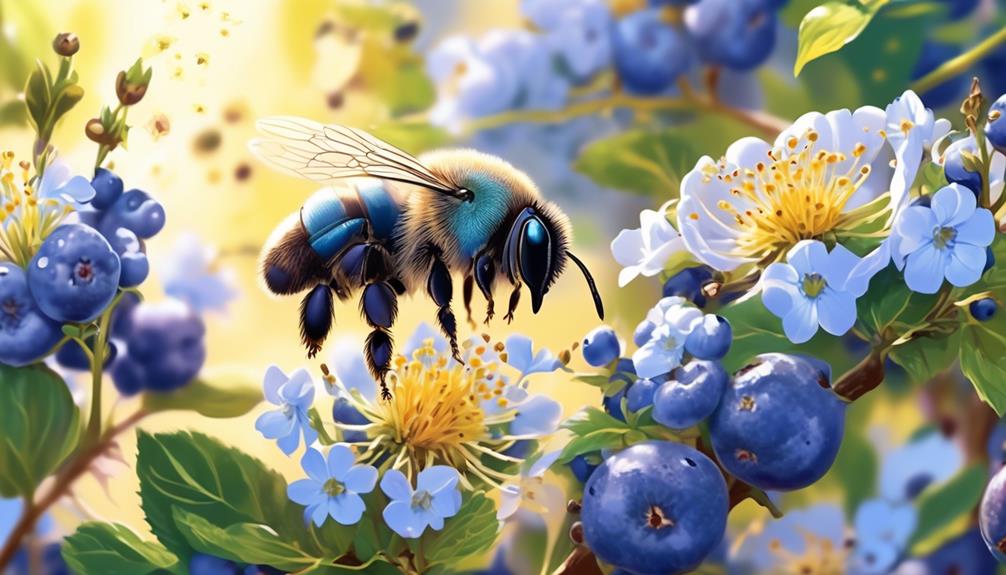
Now that you've got a good grasp on the biology and behavior of Mason bees, let's explore the intricate process of pollination they carry out, particularly with blueberries.
As Mason bees visit flowers in search of nectar and pollen, they unknowingly perform an essential role in the reproduction of plants. Their furry bodies attract pollen grains, which adhere to their hairs. When they move onto the next flower, some of these pollen grains rub off onto the female parts of the flower, the stigma. This is cross-pollination.
When it comes to blueberries, Mason bees' method of pollination is quite effective. Blueberries require 'buzz pollination,' where the bee vibrates its body at a certain frequency to dislodge the pollen. Mason bees are adept at this, allowing for efficient pollination and subsequently, a higher yield of blueberry crops.
Understanding this process is crucial as it emphasizes the significance of these unassuming insects in our ecosystems. Their role in pollination not only aids plant reproduction but also contributes to the diversity and resilience of our environments.
Mason Bees and Blueberries: A Relationship
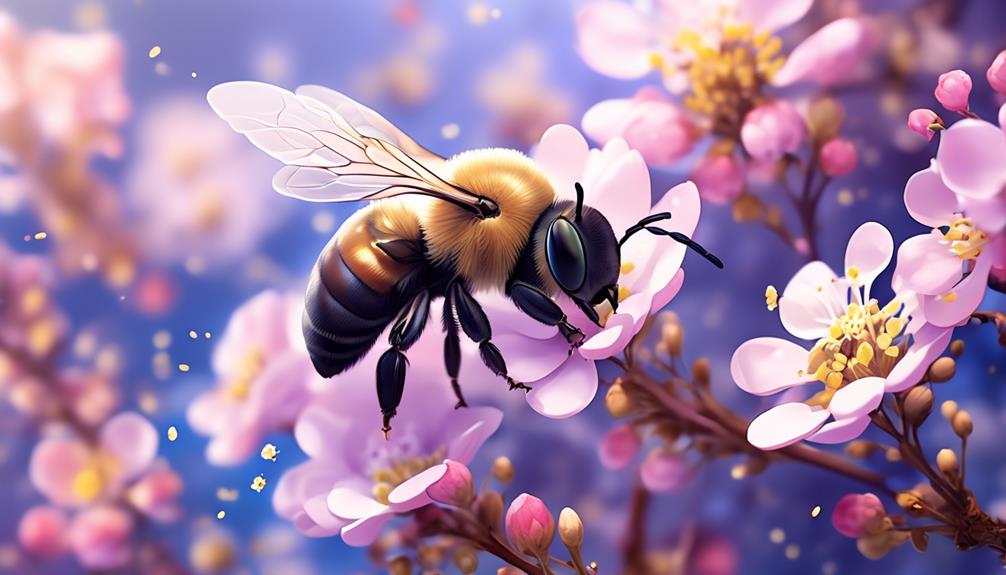
Digging deeper into the symbiotic relationship between Mason bees and blueberries, you'll find a fascinating interplay that not only benefits the bees and the plants but also has a wider impact on our ecosystems and agriculture.
Mason bees, unlike honeybees, are solitary creatures. They're hyper-efficient pollinators, needing fewer visits to fully pollinate a flower.
When it comes to blueberries, these bees are champs. Blueberry plants have flowers with bell-shaped corollas, making it difficult for many pollinators to access the nectar. Mason bees, however, have a unique method of gathering pollen from these flowers. They hang upside down and vibrate their bodies at a high frequency, a process known as 'buzz pollination'. This vibration releases pollen stuck inside the flower, ensuring pollination.
Furthermore, Mason bees' life cycle and blueberries' blooming period align perfectly. Mason bees emerge in early spring, just as blueberry bushes start to flower.
Impact on Blueberry Crops
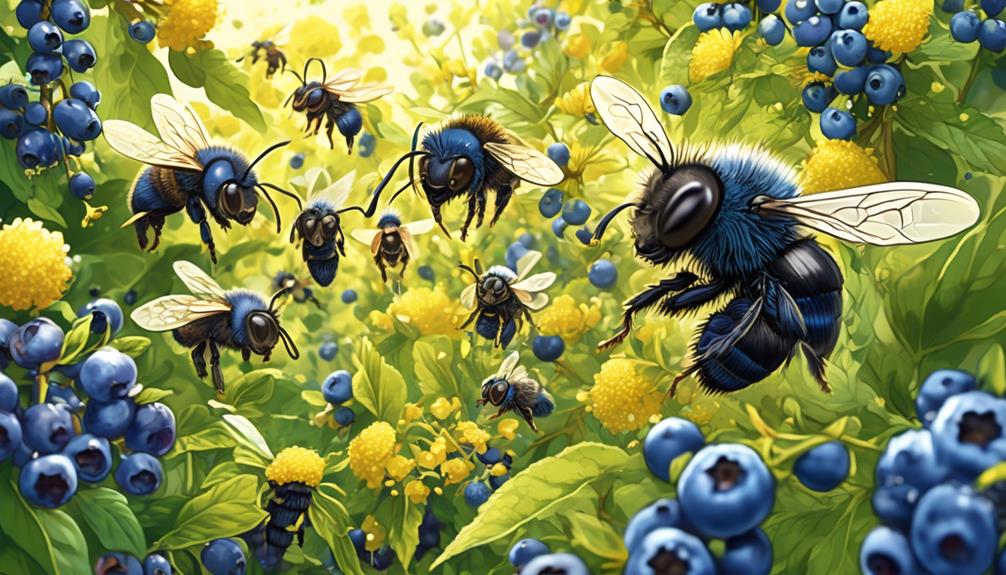
Given this tight synchrony between the Mason bee emergence and blueberry flowering, you may wonder what effect these diligent pollinators have on the blueberry crops. Scientific research indicates that the impact is notably positive. Mason bees' pollination increases the yield and quality of blueberries, leading to larger, juicier fruits with a higher sugar content.
Their unique 'buzz pollination' technique, where they vibrate their bodies at a high frequency, shakes loose a significant amount of pollen onto the flowers. This ensures a high rate of successful pollination and fertilization. It's been noted that the number of seeds in each berry – a factor directly linked to the fruit's size and sweetness – is substantially increased when Mason bees are involved.
In addition to this, their early emergence in the season means they get to work when other pollinators may not yet be active. This gives blueberry crops an early start, increasing the probability of a full and productive harvest.
Encouraging Mason Bees in Your Garden
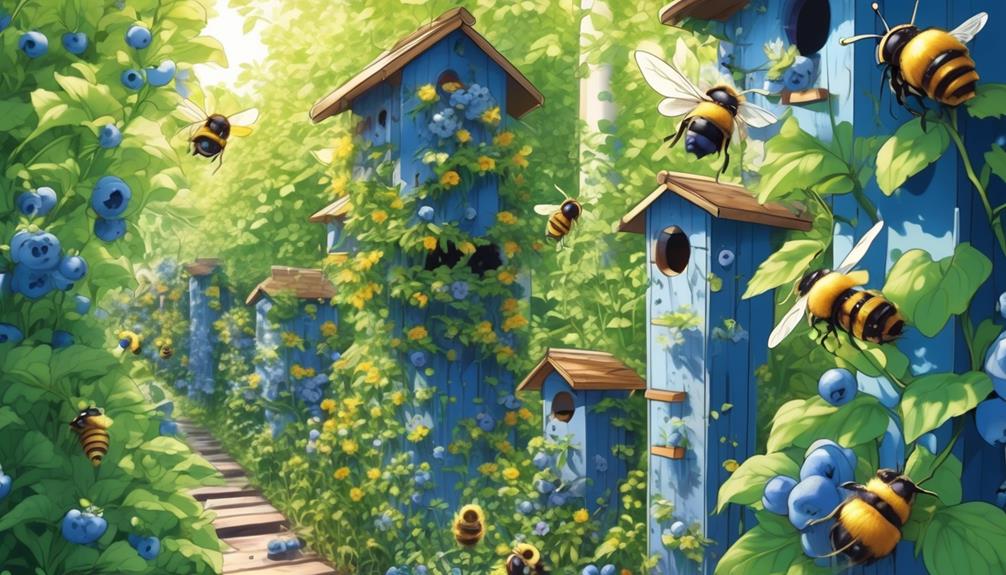
To boost your blueberry harvest by attracting these diligent pollinators, understanding how to encourage Mason bees in your garden can be a game-changer. These non-aggressive bees prefer habitats that mimic their natural environment. They're solitary creatures, so they don't need a hive like honeybees. Instead, they nest in existing holes in wood or hollow stems. You can encourage their presence by installing a bee house, preferably facing southeast to catch the morning sun.
Moreover, Mason bees need mud to seal their nests. Therefore, ensuring a mud source close to the bee house can be beneficial. If your soil isn't naturally muddy, you can create a mud pit by mixing soil with water. Additionally, Mason bees are particularly attracted to native flowering plants. Providing a diverse range of these in your garden throughout spring helps to ensure a steady food source for them.
Mason bees have a limited foraging range, so it's ideal to place the bee house near your blueberry bushes. Remember, they're more active in temperatures above 55°F, so it's essential to consider your local climate when planning your garden. By following these steps, you can increase the number of Mason bees in your garden, thus enhancing blueberry pollination.
Conclusion
Absolutely, mason bees do pollinate blueberries! They're incredibly efficient, outperforming honeybees in this task. Their activity significantly impacts blueberry crop yields.
By inviting these industrious bees into your garden, you're not just fostering biodiversity, but also ensuring a bountiful blueberry harvest. Remember, they're gentle creatures unlikely to sting, so don't hesitate to encourage the presence of mason bees.
They're a blueberry grower's tiny, buzzing best friend!


